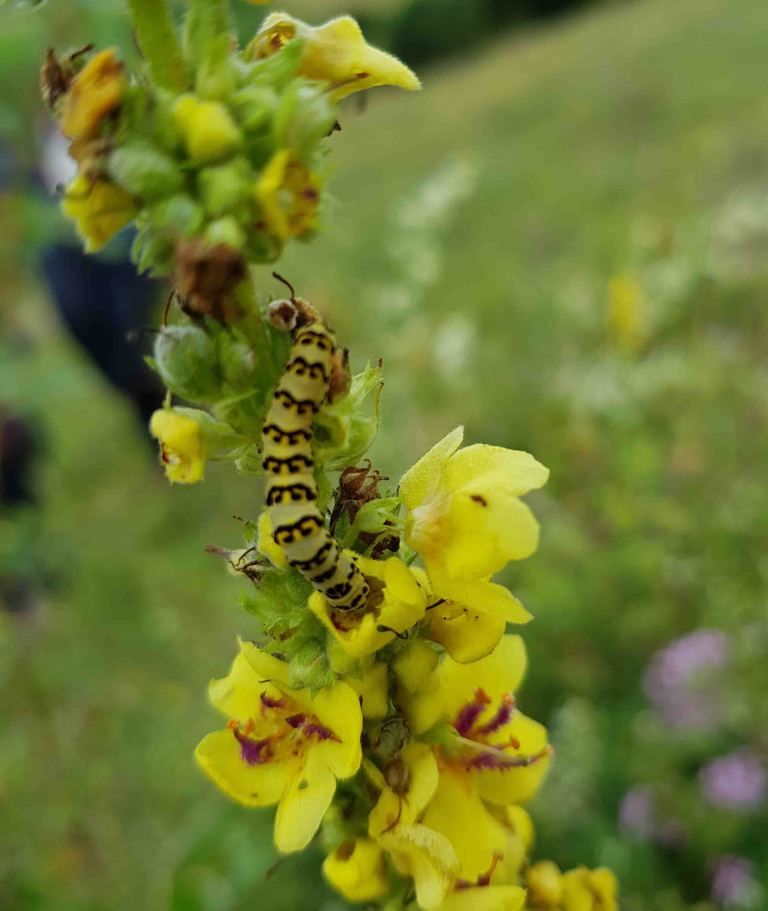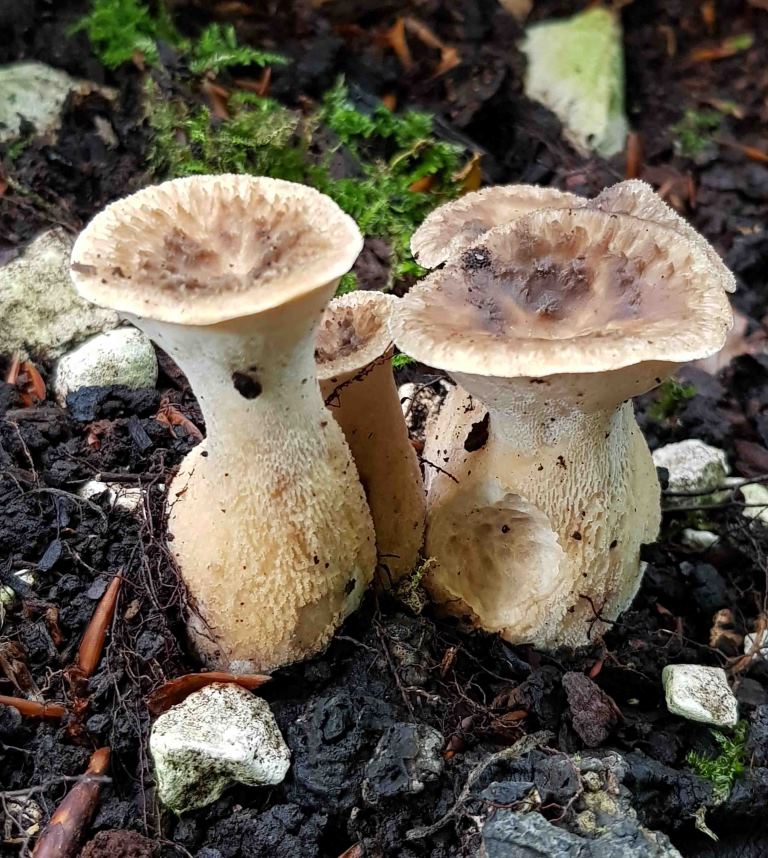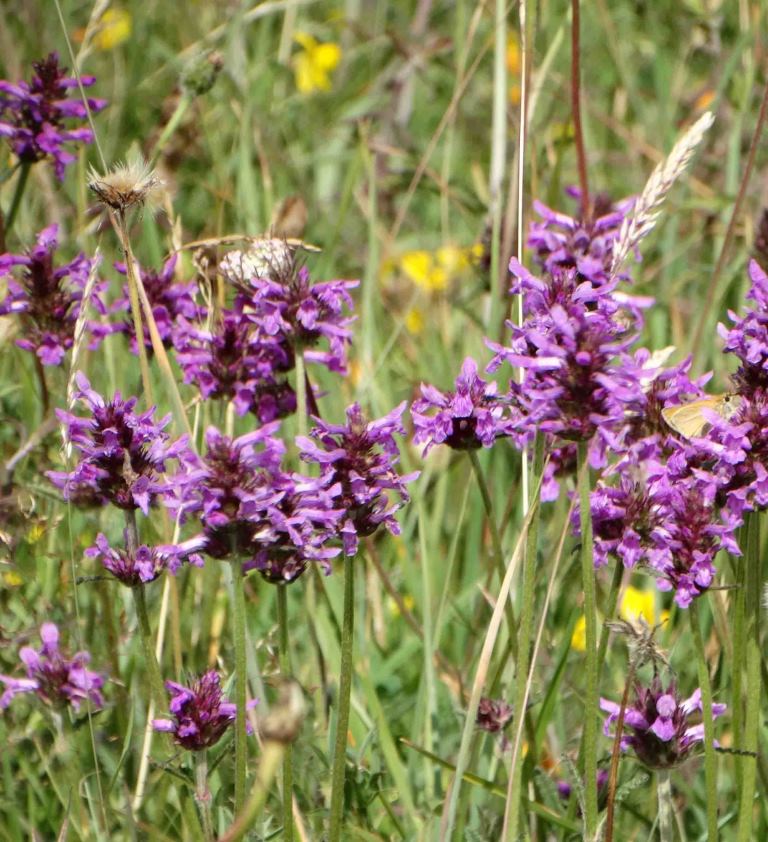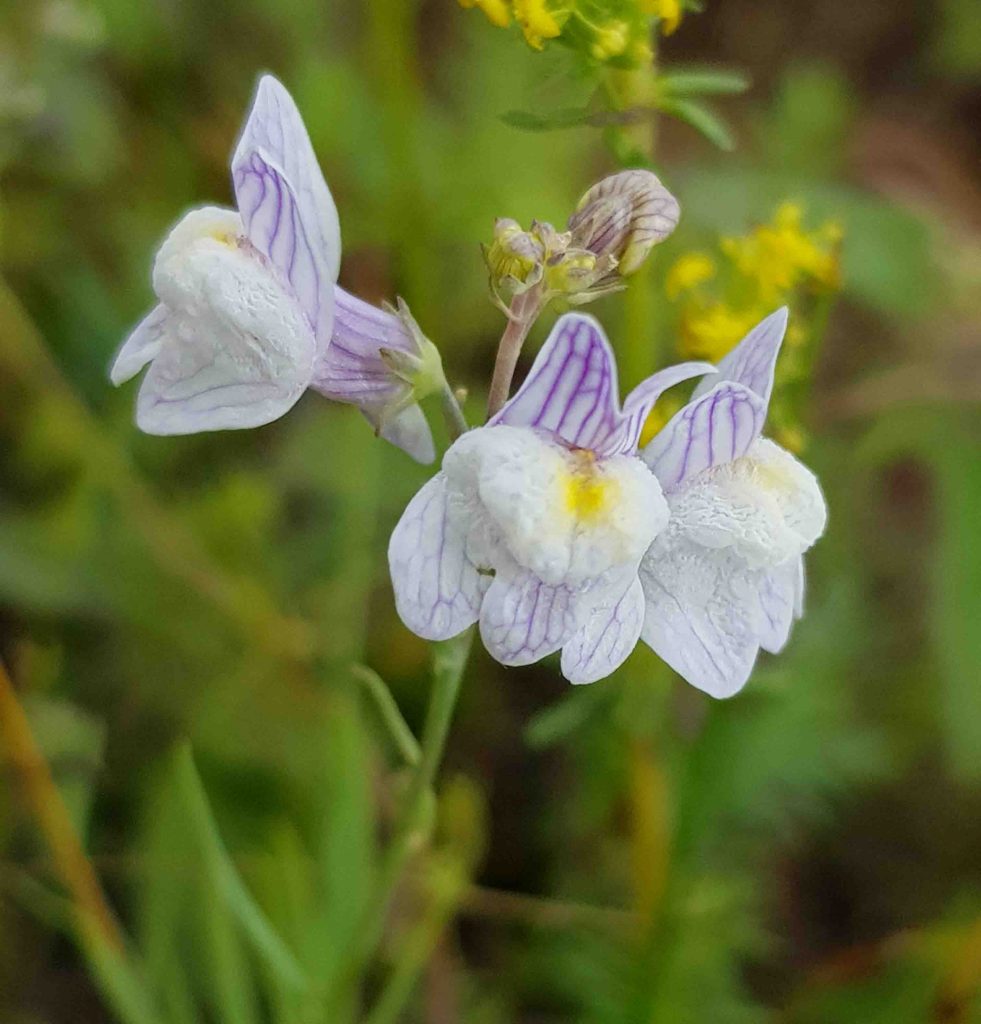Julia Cooper and Ian Duddle organised an all-day trip to Old Winchester Hill National Nature Reserve on Saturday 20 July. The reserve is on the east side of the Meon valley near West Meon in Hampshire and lies within the South Downs National Park. The walk started out steeply downwards across a west-facing field of fine chalk grassland, with plants including Crosswort, Wild Marjoram, Wild Basil, Wild Parsnip, Wild Carrot, Harebell, Perforate St John’s-wort, Greater Knapweed, Small and Field Scabious, Common Bird’s-foot-trefoil, Kidney Vetch, Wild Thyme, Lady’s Bedstraw, Hoary Plantain, Dwarf Thistle, Carline Thistle, Salad Burnet, Clustered Bellflower, Squinancywort, Field Rose, Restharrow, Yellow-wort, Pyramidal Orchid, Hoary Ragwort and Quaking Grass. Deep blue Round-headed Rampion, one of the target species for the day, was first encountered here. A Yellowhammer perched at the top of an isolated small tree. Butterflies included Meadow Brown, Chalkhill Blue, Gatekeeper, Dark Green Fritillary, Marbled White, Small Heath and Small Skipper. The only rain of the day, a brief shower, happened at this point. Caterpillars of the nationally scarce Striped Lychnis moth were found on a flower head of Dark Mullein and several tall flower spikes of Nettle-leaved Bellflower were seen at the edge of the field. The route then led upwards through a belt of woodland, where the egg-timer shaped early stages of the Dryad’s Saddle fungus were found next to a rotten log. The path emerged from the wood on a steep north-facing slope, where two tiny Frog Orchids were in flower. The walk continued along the north side of Old Winchester Hill, heading for the ramparts of the Iron Age hill fort at the top. Yellow Meadow Vetchling flowers and Brimstone, Ringlet and Small White butterflies were added to the species tally here. The ramparts were breath-taking, with their drifts of flowers, especially Round-headed Rampion and Betony. The lunch stop was on one of the Bronze Age tumuli at the top of the fort. Skylarks sang overhead, and Swifts, a flock of 9 Ravens and a Kestrel flew past. The view to the south stretched from the New Forest to the Isle of Wight and on to Chichester Harbour, while the view to the north reached to Beacon Hill and Ladle Hill in the Hampshire Downs. After lunch the walk continued along the southern side of the ramparts. The field below on the steep south-facing hillside gave a first impression of dark blue and white, from Round-headed Rampion and Squinancywort. Closer inspection revealed many more flowers in an incredibly herb-rich sward. Pale Toadflax was found up against the fence. The route back led along the top of the ridge. Several more butterflies were seen at the scrub edge beside the path, including Red Admiral, Peacock and Comma. After returning to the cars, the next stop was the Thomas Lord pub in West Mean for welcome refreshments. Final destination of the day was the other Beacon Hill, a national nature reserve on the west side of the Meon valley. A Silver-washed Fritillary butterfly gave excellent views as it nectared on bramble blossom next to the track to the reserve. The reserve lies on a steep south-facing chalk hillside which is grazed by Manx sheep. Common Rock-rose, which had not been seen at Old Winchester Hill, Clustered Bellflower and Yellow-wort were all commoner here.
Pictures by Laurie Haseler






